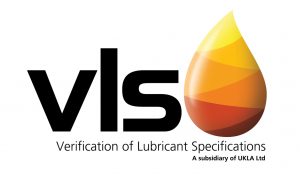The average age of vehicles on the road is increasing. Yet newer vehicles require lower viscosity lubricants. With workshops catering to a wide variety of vehicles, CVW speaks to industry body the Verification of Lubricants Specifications (VLS) about how to select the right lubricants without having a stock room full of products taking up much needed space.
The latest data from the European Automobile Manufacturers Association (ACEA) shows that the average age of vehicles on the road, both across the EU and in the UK itself, is increasing. Given operators need to manage costs and increasing vehicle durability, this isn’t a surprise. Both individual vehicle owners and larger fleet operators may well be looking to maximise their investment in existing vehicles and put off major upgrades where possible.
According to the ACEA Report (‘Vehicles in use – Europe 2017’) there were 4.7 million commercial vehicles on the UK roads, an increase of 9.5% over the last five years. The average light commercial vehicle is 8.5 years old and there are 1.4 million vehicles that are more than 10 years old. Medium and heavy duty vehicles, including buses, have an even higher average, with the average vehicle being 8.8 years old.
 Challenge for workshops Andrew Goddard, Chairman of VLS says: “For workshops this can create a real challenge. The handbooks of these older vehicles are likely to recommend oils such as a 5W30. For example, a 2007 Ford Transit would require: SAE 5W-30 (preferred), SAE 5W-40 or SAE 10W-40 that meets the specification defined by either ACEA A5/B5 (preferred) or ACEA A3/B3. However, a 2017 model will require a SAE 0W-30 engine oil that is defined by ACEA C2”.
Challenge for workshops Andrew Goddard, Chairman of VLS says: “For workshops this can create a real challenge. The handbooks of these older vehicles are likely to recommend oils such as a 5W30. For example, a 2007 Ford Transit would require: SAE 5W-30 (preferred), SAE 5W-40 or SAE 10W-40 that meets the specification defined by either ACEA A5/B5 (preferred) or ACEA A3/B3. However, a 2017 model will require a SAE 0W-30 engine oil that is defined by ACEA C2”.
As manufacturers strive to create more efficient, lower emission vehicles, lubricants need to work harder. To support this, lower viscosity lubricants are being formulated, which oil manufacturers are understandably keen to promote. The latest formulations are usually a good thing; being cleaner and greener, but putting the wrong oil in a vehicle can cause major problems. Oil provides essential lubrication for the engine, as well as protecting against friction, damage and wear and tear to the vehicle’s moving parts. Poor quality or the wrong oil can cause accelerated wear to gears and bearings leading to increased maintenance costs and if left unchecked, eventual engine failure.
Added complications
The tension between an ageing vehicle fleet requiring higher viscosity lubricants, and the quest for improved performance through newer, lower viscosity lubricants can create confusion. Added to this, the ACEA specifications for lubricants are updated every few years, to take into account the latest developments in engine and lubricants technology. As described in the Ford Transit example, not only will newer models require a lower viscosity lubricant, it may meet a different ACEA specification as well.
The most recent changes were made in 2016, and these are now in use across the market. Lubricant marketers can still make claims on current products made before December 1st 2017 against the 2012 sequences, but only until December 1st 2018, so stockholding needs to be managed accordingly. This is a subject close to VLS’ heart as many of the cases investigated have related to misleading packaging and incorrect claims – particularly with manufacturers selling products with claims to out of date specifications.
When new sequences are introduced, oils with claims against the previous can be marketed only for another two years. Manufacturers and distributors need to manage stock effectively so that buyers can be confident that the lubricants products they are using are suitable for use.

Finding the right balance
Whatever the right oil for end users’ requirements, the rule of thumb of always referring to the operating manual still holds true today as it always has. Manufacturers invest millions of pounds, euros and dollars in developing sophisticated, technologically advanced engineering and expect all the parts that go to make up an application to be of suitable quality to ensure the life of the machine for many years to come.
Ensuring long life is particularly important with an ageing vehicle fleet and a weak economic outlook. Workshops are best to review their purchase history to see which are their highest used lubricants and keep stock of those, to maximise usage and minimise stock holding. In cases of any doubt, technicians should contact their supplier or the OEM to gain a final recommendation.









